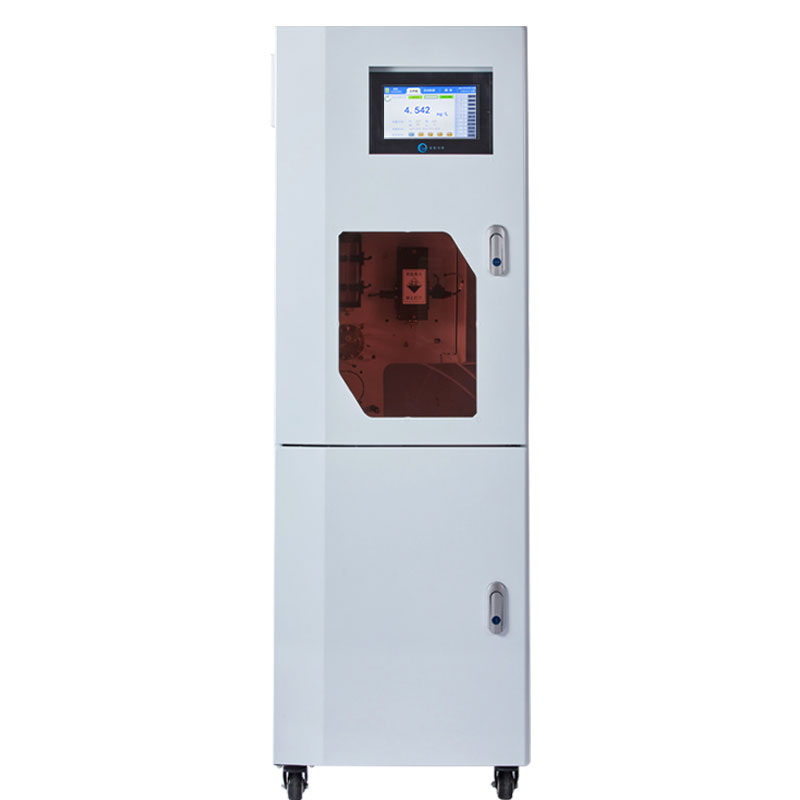Tianqiong Sensor IOT Technology Co., Ltd
Sales Manager:Ms. Emily Wang
Cel,Whatsapp,Wechat:+86 15898932201
Email:info@fengtutec.com
Add:No. 155 Optoelectronic Industry Accelerator, Gaoxin District, Weifang, Shandong, China

Sales Manager:Ms. Emily Wang
Cel,Whatsapp,Wechat:+86 15898932201
Email:info@fengtutec.com
Add:No. 155 Optoelectronic Industry Accelerator, Gaoxin District, Weifang, Shandong, China

Model:FT-COD
Brand:tianqiong
1.COD Analyzer principle
COD Analyzer provides a continuous measurement of Chemical Oxygen Demand (COD) and is the most advanced water analyzer for effective wastewater monitoring.A quantitative potassium dichromate solution was added to the sample.In a strong acidic medium, silver sulfate was used as a catalyst, and the chloride ion concentration was reduced using a unique dilution injection technique, and a combined masking of high concentration of chloride ions was used.After digestion after high temperature and high pressure, the COD concentration value was determined by spectrophotometry.
2.COD Analyzer product features
The new optoelectronic quantitative technology is not affected by interference such as large chromaticity, many suspended objects, and many bubbles.It has high reliability and accuracy and strong anti-interference ability.
High detection accuracy, low measurement limit, and low long-term drift of the instrument.
It has one-click self-test function and self-diagnosis function.
It adopts a single-channel high-integrated valve set, making maintenance and cleaning simple and fast.
All-weather networking function, monitoring the operating status of the instrument anytime and anywhere.
It has alarm function, quality control function and counter control function.
It has automatic cleaning function and automatic calibration function.
It has full-point measurement, interval measurement and external control measurement.
It works automatically after power failure recovery.
Automatic prompts and automatic reset functions for faults and reagents (samples).
It has fault logging function.
Can save historical data for more than 3 years.
Satisfies the separation of cleaning liquid and waste liquid
3.COD Analyzer Technical Parameters
Measurement method: According to standard HJ828-2017 "Water quality-chemical oxygen consumption determination-dichromate method"
Measuring range: 0-200 mg/L; 0-500 mg/L; 0-1000 mg/L; range can be customized
Display error: ≤±3% detection limit: 10mg/L
Repeatability: ≤±3% Waste liquid volume: 6mL/time
Memory effect: ≤±3%Real water sample comparison: ±8%
Constant temperature time: 900 seconds Voltage stability: ≤±5%
Measurement cycle: 39 minutes Calibration cycle: any specified time
Maintenance cycle: ≥720h/time Maintenance workload: <2 hours/month
Reagent consumption: 3 months/500ml display output: configured with a 10.1-inch color LCD touch screen
Color rendering temperature: The recommended temperature is 165℃, which can be set according to the actual water sample condition
Data export: The measured value can be imported into the USB drive and saved in the USB drive.
Signal output: RS485/RS232/USB interface/standard 2-channel 4-20mA output/standard two-channel switching input and output
Environmental requirements: Indoors with controllable temperature, recommended temperature (5-28℃), humidity ≦90% (no condensation)
Power supply and power: (220V±22) V/AC, (50±0.5Hz), 5A, 150W
Instrument size: upper cabinet 600*450*300mm; upper cabinet 700*450*300mm
Miniature automatic water quality monitoring station is a one-stop online water quality monitoring system compliant with national standards, capable of periodic or continuous monitoring of parameters such as temperature, pH, dissolved oxygen, COD, and ammonia nitrogen. Based on optical and electrochemical principles, it achieves automatic water sampling and distribution, pre-treatment, data monitoring, and remote transmission. It is suitable for environmental protection, water conservancy, and other water bodies requiring high-density, low-cost, and high-frequency monitoring....
Meteorological Instruments for Solar Energy is a professional device that integrates the monitoring functions of six key meteorological parameters: temperature, humidity, wind speed, wind direction, air pressure, and rainfall. Its core highlight lies in its highly integrated and ingenious design. It...
Microclimate refers to the small - scale climatic characteristics of the near - surface atmosphere and the upper layer of soil, which are caused by the specific structural features of the underlying surface. These characteristics are usually reflected in individual meteorological values and sometime...
The Ultrasonic weather station utilizes ultrasonic technology to measure meteorological elements. When ultrasonic waves propagate in the air, their propagation speed is affected by air flow. When the wind blows from different directions, the propagation times of ultrasonic waves in the downwind and...